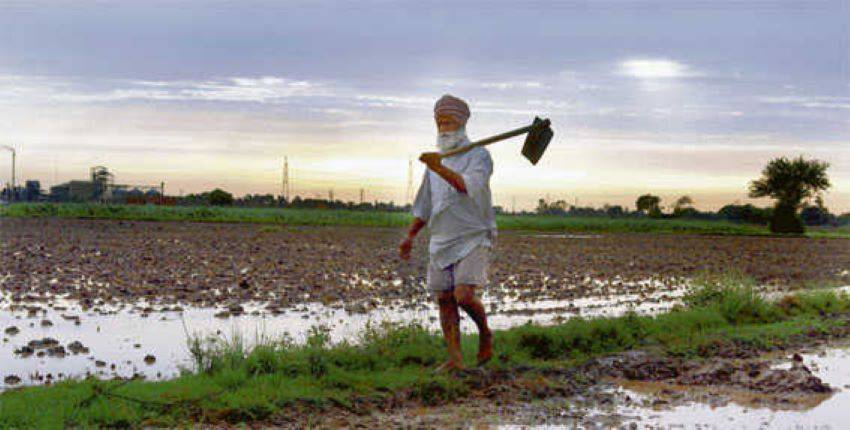
Punjab's agriculture, the state's mainstay, has a huge potential for energy generation from agro-residues, an alternative model of diversification, in addition to clean energy transition by utilising solar power even in the agricultural field.
Farmers who have leased out land for solar power generation are happier than those who are tilling it, according to energy experts. Union Minister of New and Renewable Energy R.K. Singh said in a reply in the Rajya Sabha this month that Punjab has taken the lead by generating over 6,034 million units (MUs) of solar power in the last four years, leaving Haryana (1,059 MUs), Himachal Pradesh (104 MUs), and Union Territory Chandigarh (54 MUs) far behind.
The AAP government has included a Rs 100 crore provision in the current state budget to install rooftop solar plants in government schools. According to official records, Punjab has installed 15 megawatts (MW) of rooftop solar capacity in the residential sector, while Haryana has installed over 23 MW, Chandigarh has installed 18 MW, and Himachal Pradesh has installed only 0.78 MW.
New and Renewable Energy Minister Aman Arora told that the government would initiate comprehensive measures to make the state more self-sufficient and efficient in the renewable energy sector. The emphasis is on establishing projects related to various new energy sources such as solar, biomass, and hydel, he added.
In Sangrur district, Asia's largest compressed biogas (CBG) plant, with a total capacity of 33.23 tonnes per day, was commissioned this month. The plant's CBG is delivered to an Indian Oil Corporation Ltd outlet. Furthermore, the state-run Punjab Energy Development Agency (PEDA) has allocated 42 additional CBG projects with a total capacity of 492.58 tonnes per day based on paddy straw and other agro-residue to find a solution to stubble burning smog, which blankets the entire northern belt of India in October-November, including Punjab, Haryana, Delhi, and Chandigarh.
The state has allocated Rs 200 crore in the current budget to combat stubble burning smog. According to the minister, the 42 additional CBG projects are expected to attract private investment of around Rs 1,200 crore, while greenhouse gas emissions will be reduced and the rural economy will benefit from additional income from agro residue.
Sumeet Jarangal, CEO of PEDA, stated that two more plants with a total capacity of 14.25 tonnes CBG per day are expected to be completed in 2022-23. The remaining projects should be completed within the next three years. Furthermore, fermented organic manure produced as a byproduct from these CBG plants will be used for organic farming, assisting local allied industries to thrive.
Hindustan Petroleum Corp Ltd is also setting up a project with a capacity 100 KL 2G ethanol per day based on paddy straw and other agro-residue in Bathinda district, which would be completed by February 2023. This project will use approximately 2 lakh tonnes of paddy straw per year. However, researchers at Pune's Indian Institute of Tropical Meteorology (IITM) have raised the alarm that climate change may have an impact on Punjab's renewable energy potential.
Punjab has a significant amount of solar energy potential due to its 300+ days of annual sunshine and insolation levels ranging between four and seven kilowatts per square metre. T.S. Anandh, Deepa Gopalakrishnan, and Parthasarathi Mukhopadhyay of the IITM authored the latest study, 'Analysis of future wind and solar potential over India using climate models,' which was published in the peer-reviewed journal Current Science.
"Our industry must adapt to changing climate conditions, and our technologies must keep up. Such predictions should be regarded as possibilities rather than facts. Climate change may have an impact on the efficiency of renewable energy in Punjab and neighbouring areas. The study emphasises the importance of anticipating and addressing such scenarios "Mukhopadhyay stated.
The researchers conducted the study by analysing wind and solar projections for the Indian subcontinent over the next 40 years using various state-of-the-art climate models developed by the Intergovernmental Panel on Climate Change (IPCC).
"Our projections of the impact of renewable energy sources present a classic case of challenges and opportunities in Punjab. For this region, solar potential is expected to decrease in the future, with a significant decrease in the monsoon and post-monsoon seasons, necessitating better preparation "Mukhopadhyay added that the monsoons are expected to be cloudier.
In 2019, the Punjab government released a draught of its renewable energy strategy, with the goal of using 3 GW of renewable energy by 2030 to meet 21% of its power needs. The state government, however, has not yet finalised this policy. The previous strategy set a goal of 1,000 MW, or 1 GW, of solar power producing capacity by 2022. Punjab's installed solar capacity increased from 405 MW in 2016 to 1,117.99 MW in 2022, according to data from the Ministry of New and Renewable Energy.
















